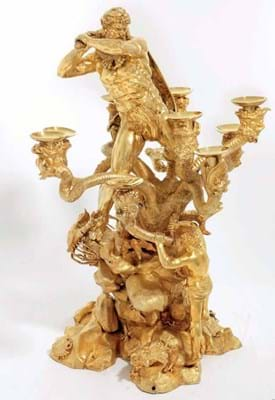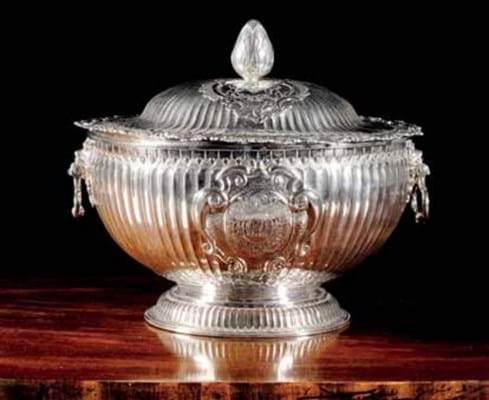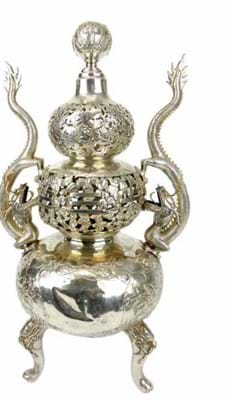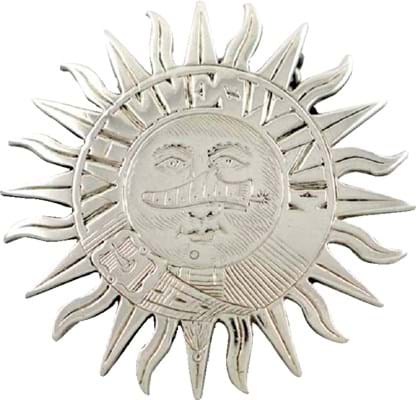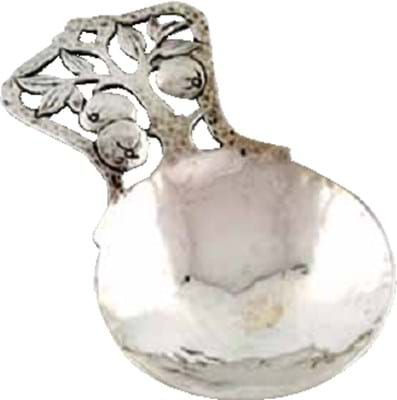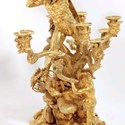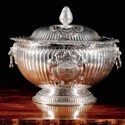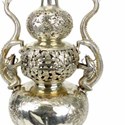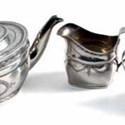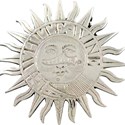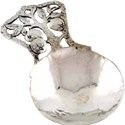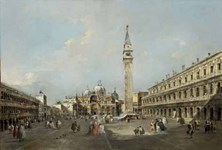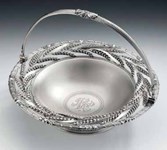Specialist silver sales are a rarer breed than they used to be. None have been held in the capital so far this year.
However, in the coming weeks, the collecting community will be treated to an array of events that promise to test all aspects of the market – from collectable smallwork and venerable family silver to a spectacular example of Regency royal plate.
Christie’s
When Prince Frederick, the second son of George III, died in January 1827 leaving huge debts, his executors took the unprecedented step of quickly selling a royal collection at public auction.
Within two months of his demise, the Duke of York’s silver was offered at Christie’s across an unreserved four-day, ticket-only sale from March 19-22.
Alongside the celebrated Shield of Achilles on the title page of the auction catalogue was a massive nine-light silver-gilt centrepiece on the theme of the second labour of Hercules made by Edward Cornelius Farrell (1775-1850).
When it was knocked down for £343 5s 6d, or roughly a quarter of what it had cost the duke a decade earlier, auctioneer James Christie II lamented: “I feel sorry for the sacrifice which has been made in this article. I feel greater grief that the workmanship of the artist is valued so low.”
Acquired by a descendent of Sir Clive Milnes-Coates (1879-1972), it remained at the family seat of Helperby Hall, Yorkshire, until it was sold by Christie’s in 1967. Its last appearance at auction was in 2004 when it went unsold as part of the Ruxton and Love collection at Christie’s New York.
The Hercules centrepiece of 1824-25 is the bestknown work from an extraordinary group of more than a dozen pieces of silver made by Farrell for the Duke of York under the direction of the retailer and antiquarian, Kensington Lewis (1790-1854).
These early examples of 19th century historicism are based on a variety of eclectic sources – in this case both Renaissance and baroque designs.
Weighing 1128oz, the much-published and exhibited piece comes under the hammer at Christie’s later this month – nearly 200 years after that first auction – with an estimate of £400,000- 600,000. It is among a treasure trove of English and Continental silver and silver gilt from the collection of property magnate Robert de Balkany (1931-2015).
The March 22-23 sale includes over 700 works of art from two residences: Palazzo Lancellotti in Rome, the interior of which was designed by Federico Forquet, and Château Balsan in Eze, which was decorated by Jacques Garcia. Sotheby’s Paris sold the €13m contents of the de Balkany Hôtel de Feuquières at Rue de Varenne, Paris, in September 2016.
Alongside more than two dozen German 17th century ‘pineapple’ cups, two other works by Farrell feature in the collection – a pair of George IV ewers (London, 1826), cast and chased with putti and satyrs, and a set of 12 George III triton salt cellars and spoons (London, 1817). They each carry estimates of £100,000-150,000.
Sotheby’s
On March 28, two collections make the journey from Scotland to Sotheby’s Bond Street.
Each tells the story of a venerable family: the ancient and noble earls and marquesses of Lothian and the Forbes of Pitsligo, whose success was rooted in the economic prosperity of the Union.
The William III Britannia standard silver punch bowl by Anthony Nelme (London, 1701) comes to market for the first time in over three centuries.
The engraved arms to both the bowl and the associated cover (marked for Edinburgh, 1748) are those of the Wishart family of Pitarrow, Forfar.
Probably given as a gift to mark the marriage of Margaret Wishart (b.1680) to Daniel Stuart of Castlemilk (1670-1708), it came by descent to Sir John Stuart (1752-1821) of Fettercairn who recorded in his will “a silver tureen and cover, having the arms of Wishart engraved thereon, as an heirloom to be preserved in his family at Fettercairn”.
Weighing a total of 78oz, the Fettercairn bowl carries an estimate of £12,000-18,000.
London Auctions
The March 27 silver sale at London Auctions in Chiswick features a collection of regimental silver from the Royal Regiment of Fusiliers headquarters.
This mix of presentation pieces and typical mess hall comes from the Royal Lancashire Fusiliers, the Royal Northumberland Fusiliers, the Royal Warwickshire Fusiliers and the City of London Royal Fusiliers.
The proceeds of the sale will be used by the regiment for charitable purposes.
Much is English Georgian and Victorian silver, but here is a Chinese incense burner with dragon feet marked Arnold Sterling.
The inscription reads: Presented To The 1st Battalion The Lancashire Fusiliers By The British Community of Tien Tsen As A Token Of Appreciation Of The Service Rendered By The Battalion During The Sino-Japanese Hostilities 1937-1938.
Standing 20in (51cm) and weighing 59oz, the estimate is £1500-2500.
Lawrences
To give an idea of scale, the teapot to this rare Irish provincial miniature service is just over 2in (6cm) high. It is made in much the same way as its full-size equivalent and, says Lawrences specialist Alex Butcher, might well have been a salesman’s sample.
The three pieces have slight differences to the bright cut engraving but are all marked for John Whelpley of Cork, c.1800.
From the personal collection of a deceased dealer, it carries an estimate of £2000-3000 at Lawrences of Crewkerne on April 4.
Woolley & Wallis
The April 25-25 silver sale at Woolley & Wallis in Salisbury plays host to a number of private collections including one of caddy spoons and another of wine labels.
Specialist Rupert Slingsby describes the array of more than 3000 wine labels, assembled over many years by a recently deceased collector, as the finest he has ever handled.
It will be dispersed across a number of sales with the first part including a number of rarities such as an unmarked white wine label c.1790 formed as a sun with a shoe with a spur engraved to the face. The estimate is £300-400.
The collection of caddy spoons formed by a private lady numbers more than 400 examples to be sold in 120 lots over two sales (April and July).
The collection has a strong emphasis on Arts & Crafts, Art Nouveau and modern caddy spoons – a buoyant area of this market and a contrast to the modest sums now paid for many of the traditional Georgian caddy spoons.
Over 40 Arts & Crafts spoons in the sale include a spot-hammered example by Bernard Intone (Birmingham, 1928), with a circular spot-hammered bowl and handle pierced with apples on a tree. Again the estimate is £300-400.


